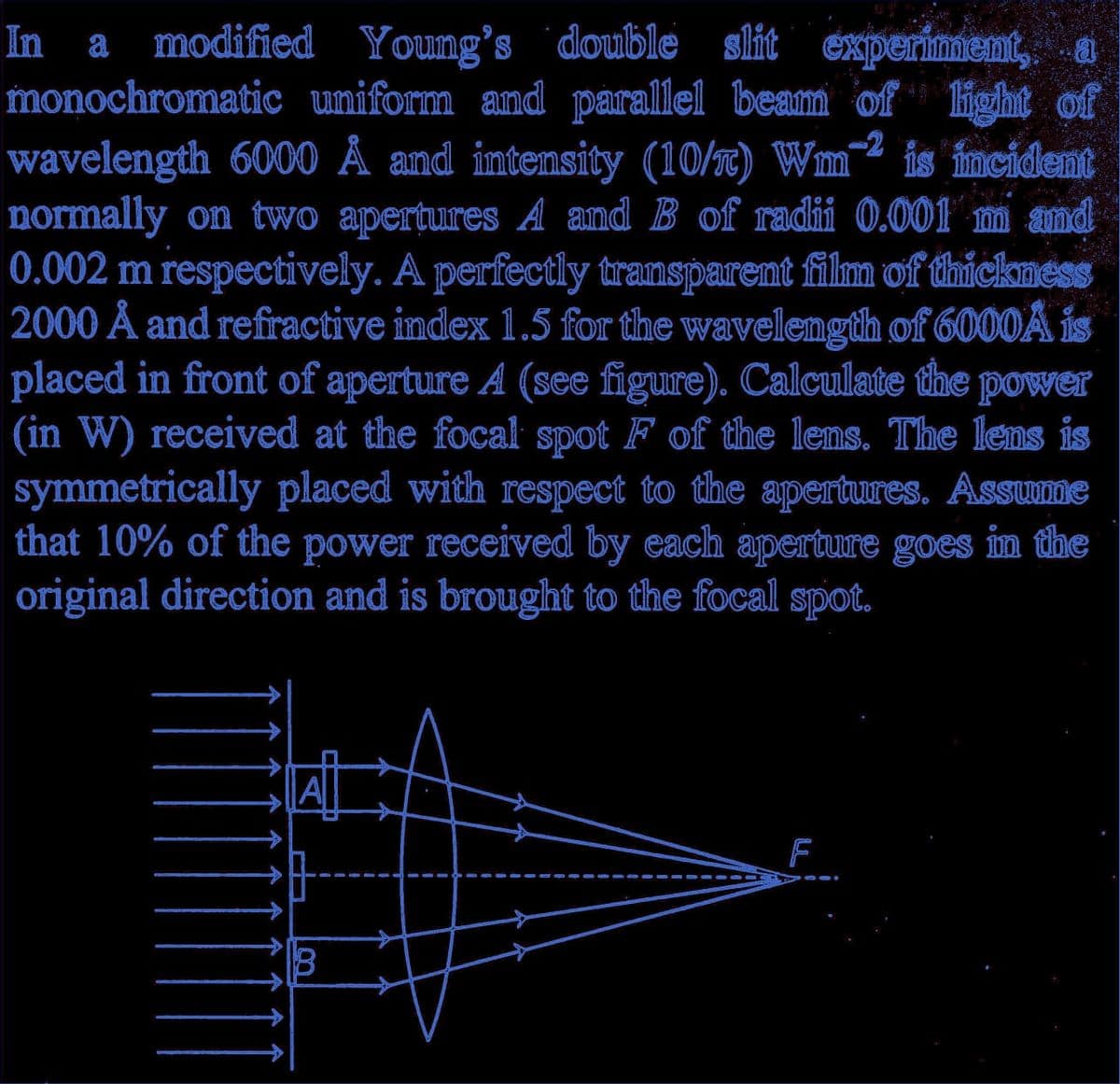In a modified Young's double slit experiment, a monochromatic uniform and parallel beam of light of wavelength 6000 A and intensity (10/) Wm2 is incident normally on two apertures A and B of radii 0.001 m and 0.002 m respectively. A perfectly transparent film of thickness 2000 Å and refractive index 1.5 for the wavelength of 6000A is placed in front of aperture A (see figure). Calculate the power (in W) received at the focal spot F of the lens. The lens is symmetrically placed with respect to the apertures. Assume that 10% of the power received by each aperture goes in the original direction and is brought to the focal spot.
In a modified Young's double slit experiment, a monochromatic uniform and parallel beam of light of wavelength 6000 A and intensity (10/) Wm2 is incident normally on two apertures A and B of radii 0.001 m and 0.002 m respectively. A perfectly transparent film of thickness 2000 Å and refractive index 1.5 for the wavelength of 6000A is placed in front of aperture A (see figure). Calculate the power (in W) received at the focal spot F of the lens. The lens is symmetrically placed with respect to the apertures. Assume that 10% of the power received by each aperture goes in the original direction and is brought to the focal spot.
Related questions
Question

Transcribed Image Text:In a modified Young's double slit experiment, a
monochromatic uniform and parallel beam of light of
wavelength 6000 A and intensity (10/) Wm2 is incident
normally on two apertures A and B of radii 0.001 m and
0.002 m respectively. A perfectly transparent film of thickness
2000 A and refractive index 1.5 for the wavelength of 6000A is
placed in front of aperture A (see figure). Calculate the power
(in W) received at the focal spot F of the lens. The lens is
symmetrically placed with respect to the apertures. Assume
that 10% of the power received by each aperture goes in the
original direction and is brought to the focal spot.
Expert Solution
This question has been solved!
Explore an expertly crafted, step-by-step solution for a thorough understanding of key concepts.
Step by step
Solved in 2 steps
